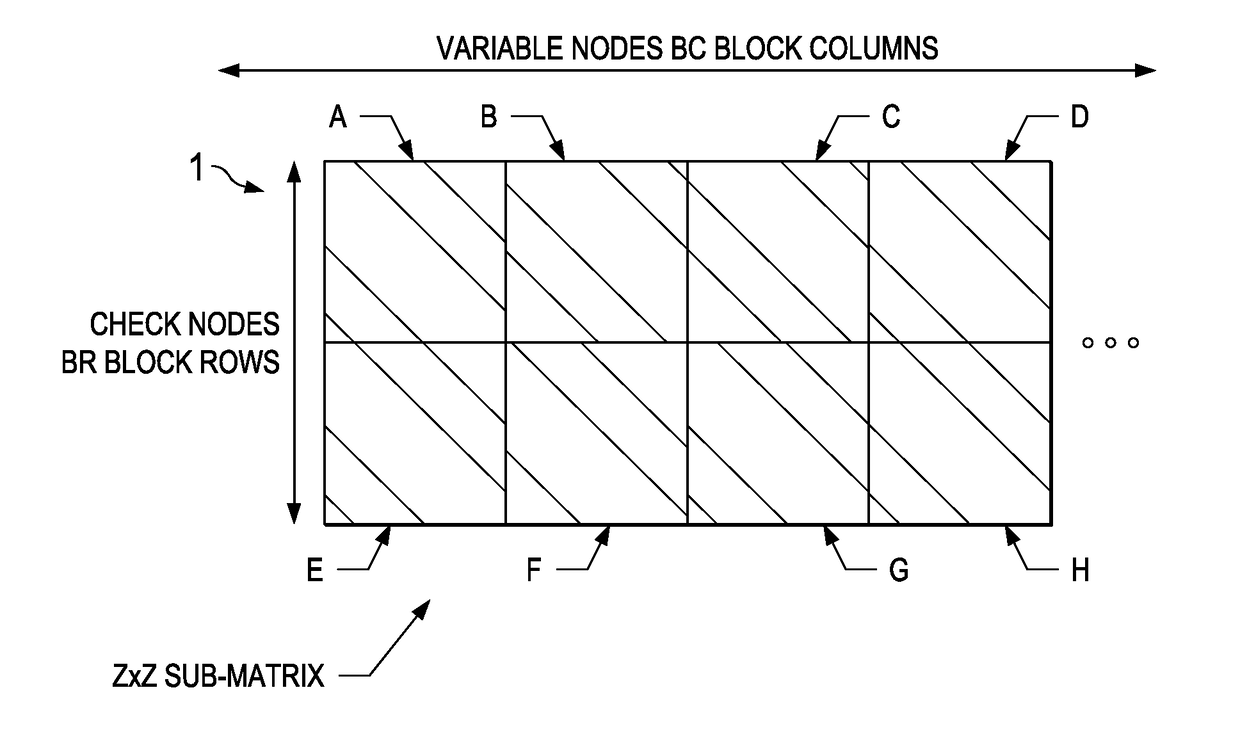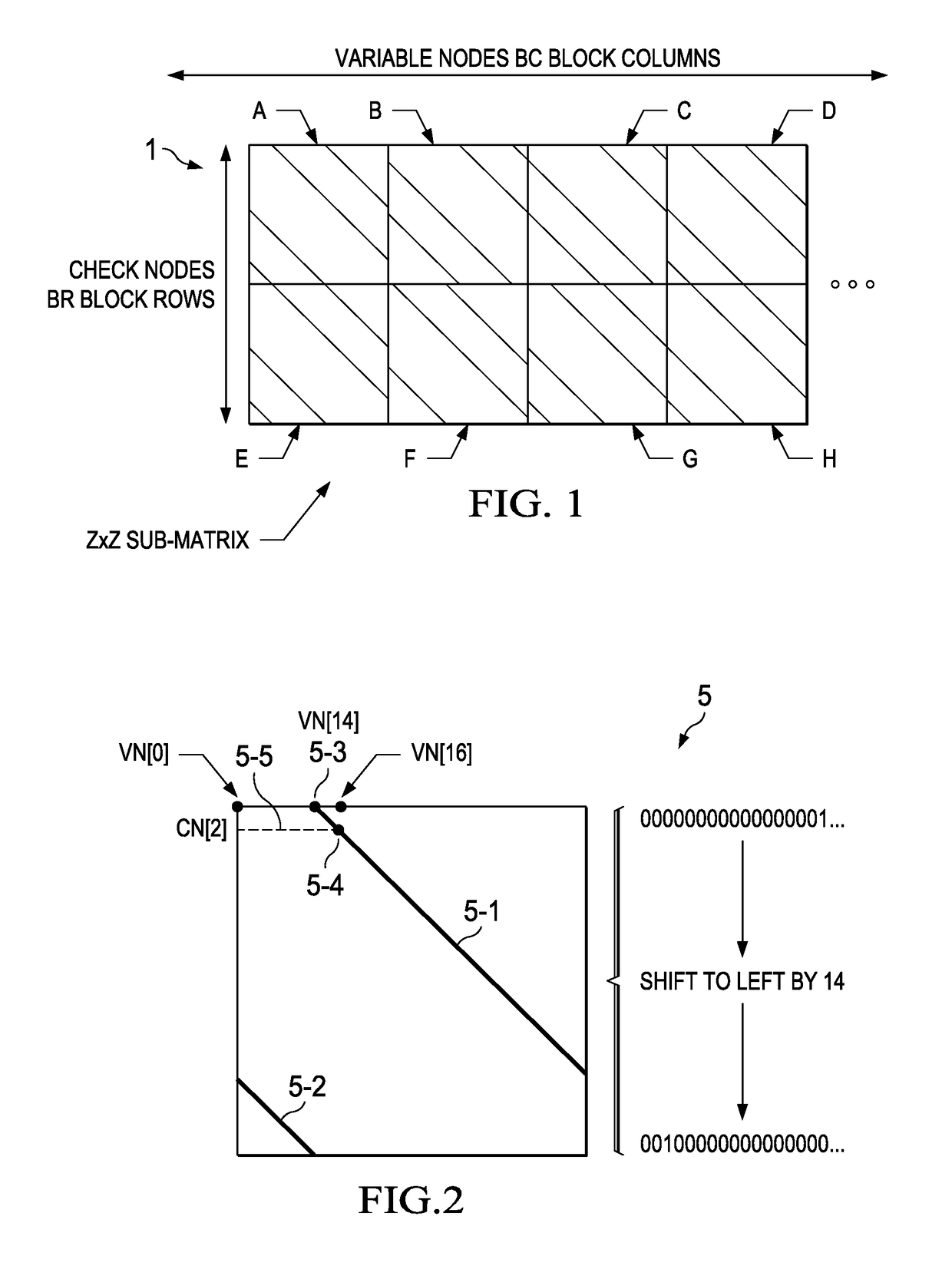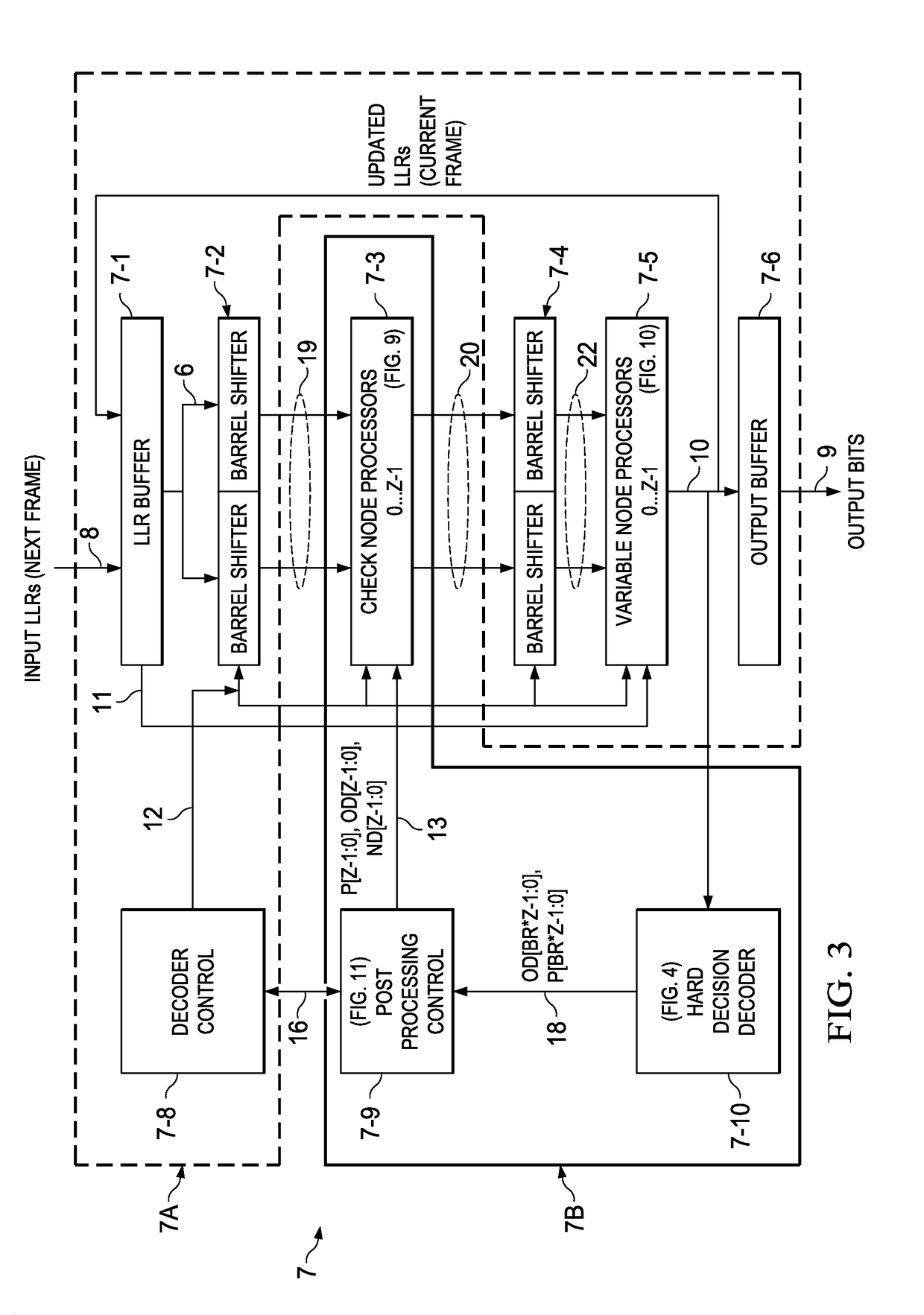LDPC post-processor architecture and method for low error floor conditions
- Summary
- Abstract
- Description
- Claims
- Application Information
AI Technical Summary
Benefits of technology
Problems solved by technology
Method used
Image
Examples
Embodiment Construction
[0055]This invention describes hardware that implements a new post-processing algorithm for addition to a high-throughput LDPC decoder. One embodiment of the new hardware post-processor implementation is designed for error floor mitigation in a parallel QC-LDPC (“Quasi-Cyclic” LDPC) decoder. The post-processing algorithm injects noise of controllable duration (and also controllable magnitude, if desired) into the decoder to help the decoder output converge to a valid codeword. The post-processing algorithm can be applied to QC-LDPC decoder architectures and also to other types of decoder architectures. In one embodiment, the post-processing algorithm and hardware may operate to lower the error floor by a factor of nearly 10.
[0056]As previously indicated, some LDPC codes are known to exhibit error floors (i.e. a reduction in the slope of the bit error rate (BER) versus channel signal-to-noise ratio (SNR) curve) at low BER levels. This implies that in the error floor region, a large i...
PUM
 Login to View More
Login to View More Abstract
Description
Claims
Application Information
 Login to View More
Login to View More - R&D
- Intellectual Property
- Life Sciences
- Materials
- Tech Scout
- Unparalleled Data Quality
- Higher Quality Content
- 60% Fewer Hallucinations
Browse by: Latest US Patents, China's latest patents, Technical Efficacy Thesaurus, Application Domain, Technology Topic, Popular Technical Reports.
© 2025 PatSnap. All rights reserved.Legal|Privacy policy|Modern Slavery Act Transparency Statement|Sitemap|About US| Contact US: help@patsnap.com



